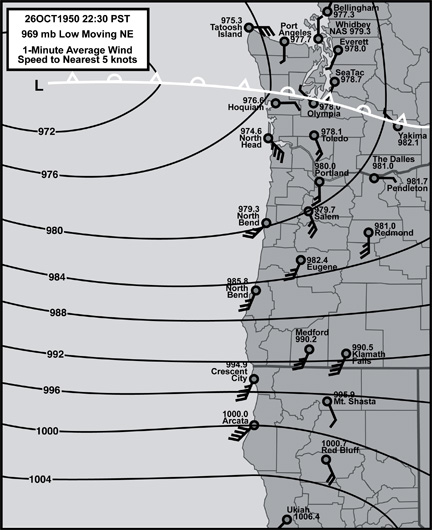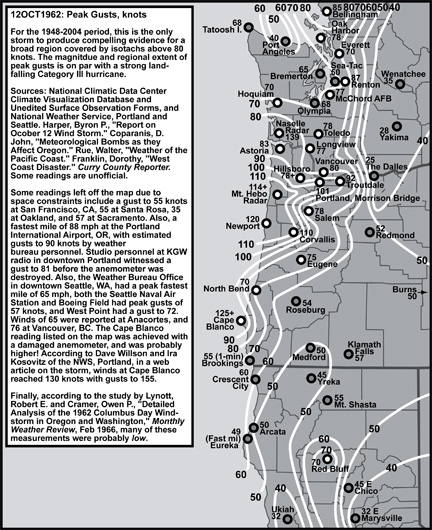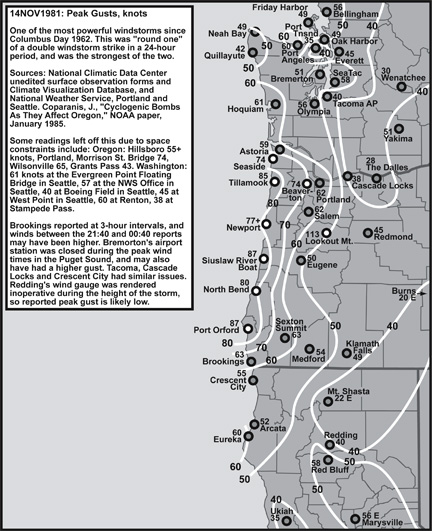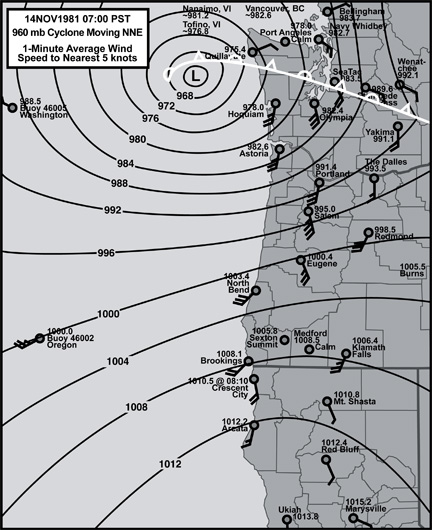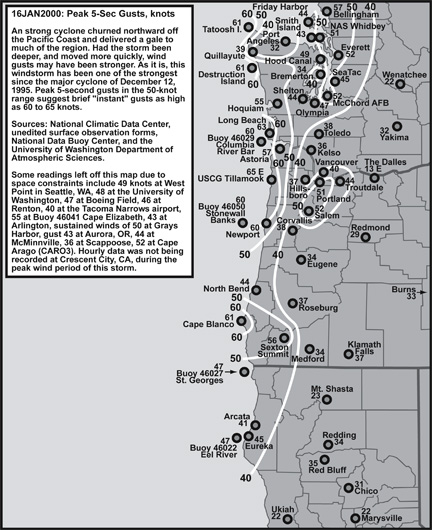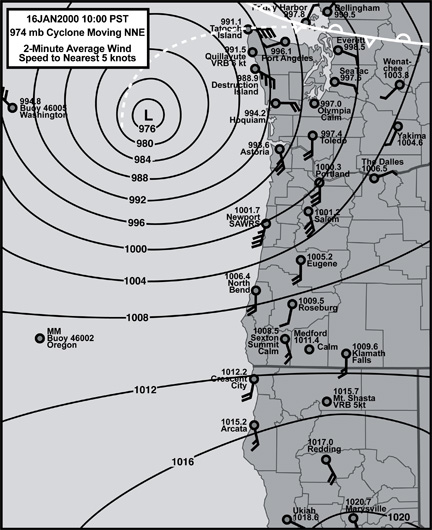A typical track for Class 6 windstorms is initially east to northeast, with a turn to the north to north-northeast offshore of northwest California (usually inside 130ºW longitude), a path that typically brings the low center onto Vancouver Island without landing in California, Oregon or Washington. This brings a Class 6 cyclone's core close to the Pacific Coast along the entire length of the region-of-interest. As the low progresses northward, all of the area ends up south of the low center, and is subjected to the cyclone's powerful southerly winds. Due to a favorable upper-air flow, more-or-less south, and an overall northward momentum of the storm, strong southerly winds are supported in the south-north trending valleys. Therefore, even without a landfall and subsequent close-passage of the low's center to the north of inland stations (as with Class 1 through 5 events), Class 6 events tend to produce the strongest inland-area winds.
The power of the delivered gale in Class 6 storms appears to be largely related to the strength and timing these five variables: 1) The proximity of the low to the coast: The nearer the low, the stronger the winds. 2) Cyclone depth: The deeper the low, the further from the coast it can be and still generate damaging inland winds. 3) Cyclone track: The closer the path is to due-north, the better the support for strong southerly winds at inland locations. 4) Cyclone speed: The faster the cyclone moves, the stronger the surface winds. 5) Cyclone development: If the timing of peak development happens after the hook northward, making it coincide with the low's close passage to the coast, the stronger the winds. If all these variables come strongly in phase at a similar time, a "perfect storm" results. This is a very rare event. There is only one storm from the 1948-present era where all these conditions were met strongly: the 12 Oct 1962 "Columbus Day Storm". The result was equivalent to a Category II to III hurricane. All other Class 6 events have had considerably less impact than the Columbus Day Storm, and the lesser blows usually can be explained by one or more of the above variables not being met to as significant degree as on 12 Oct 1962.
The Oregon Coast and Willamette Valley appear to receive the brunt of these storms, especially when controlling variables are well in phase. Inland, the region from about Salem, OR, north to the vicinity of Vancouver, WA, is typically lashed with the strongest winds. Washington certainly takes a serious pummeling, but wind speeds tend to be relatively lower than those measured in Oregon. It appears that a wind "dead zone", where peak gusts are considerably less than regions both south and north, is a typical response over parts of the Puget Lowlands. This lower-velocity region may show up in the Seattle-Tacoma region. Note that this is relative: Wind gusts can still reach high-wind criteria, but they may be 20-knots-or-more slower than surrounding areas.

